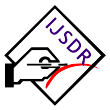Imp Links for Author
Imp Links for Reviewer
Research Area
Subscribe IJSDR
Visitor Counter
Copyright Infringement Claims
Indexing Partner
|
Published Paper Details
|
|
| Paper Title: | A Review of Recent Approaches in Floating Systems for Drug Delivery Using Microballoons |
| Authors Name: | Sachin Namdeo Kothawade , Vishal Vijay Pande , Sandesh Sachhidanand Bole , Kalyani Appasaheb Autade , Rajashri Balasaheb Sumbe |
| Unique Id: | IJSDR2212095 |
| Published In: | Volume 7 Issue 12, December-2022 |
| Abstract: | Gastro-retentive floating microspheres were developed as a result of the recent advancements in floating delivery systems for drugs (FDDS), which included the uniform dispersion of multiparticulate dosage forms along the GIT. This could lead to more consistent drug absorption and a lower risk of local irritation. Microballoons (MB), a multi-unit extended release with a sphere-shaped cavity encased in a tough polymer shell, have been developed as a dosage form with exceptional buoyancy in the stomach. This preparation for constrained intestinal absorption is made to float on top of gastric acid, that has a relative density lower than 1.By using enteric acrylic polymers and the emulsion solvent diffusion method, microballoons are prepared and filled to drug in one‘s outer polymer casings. Enteric acrylic plastics are used to generate microballoons that are drug-loaded in one‘s external polymer casings and dissipate in a solution of dichloromethane and ethanol. Cavity development in microparticles seems to be particularly correlated with dichloromethane evaporation. Microballoons with a drug distributed or dispersed all through the particle-matrix have the potential for a controlled drug release and float continuously for more than 12 hours in vitro out over the surface of an acidified dissolution medium with surfactant. The drug is released slowly and at the desired rate as the microballoons glide over the components of the stomach, increasing gastro-retention time and lowering fluctuations in plasma concentration. |
| Keywords: | Gastro retentive drug delivery systems, non-effervescent systems, floating drug delivery systems, microballoons, CRDDS |
| Cite Article: | "A Review of Recent Approaches in Floating Systems for Drug Delivery Using Microballoons", International Journal of Science & Engineering Development Research (www.ijsdr.org), ISSN:2455-2631, Vol.7, Issue 12, page no.626 - 633, December-2022, Available :http://www.ijsdr.org/papers/IJSDR2212095.pdf |
| Downloads: | 000337074 |
| Publication Details: | Published Paper ID: IJSDR2212095 Registration ID:203070 Published In: Volume 7 Issue 12, December-2022 DOI (Digital Object Identifier): http://doi.one/10.1729/Journal.32342 Page No: 626 - 633 Publisher: IJSDR | www.ijsdr.org ISSN Number: 2455-2631 |
|
Click Here to Download This Article |
|
| Article Preview | |
|
|
|
Major Indexing from www.ijsdr.org
| Google Scholar | ResearcherID Thomson Reuters | Mendeley : reference manager | Academia.edu |
| arXiv.org : cornell university library | Research Gate | CiteSeerX | DOAJ : Directory of Open Access Journals |
| DRJI | Index Copernicus International | Scribd | DocStoc |
Track Paper
Important Links
Conference Proposal
ISSN
 |
 |
DOI (A digital object identifier)
  Providing A digital object identifier by DOI How to GET DOI and Hard Copy Related |
Open Access License Policy
Social Media
Indexing Partner |
|||
| Copyright © 2024 - All Rights Reserved - IJSDR | |||






Facebook Twitter Instagram LinkedIn